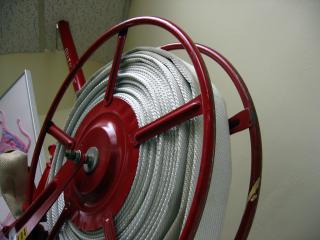
With good reason, ice cores have been getting a lot of attention lately. Their careful analysis gives us priceless insights into the history of Earth’s climate. Using cores from Greenland, we can go back more than 100,000 years, tracking temperature, carbon dioxide concentration, and even solar activity (using beryllium isotopes). Using cores from Antarctica, it is possible to go back about 650,000 years.
Ice cores can be even more valuable when they are matched up against records of other kinds. Living and petrified trees can be matched up, year for year, with the ice record. So can pollen deposits at the bottom of seas and lakes: arguably the richest data source of all. By looking at pollen deposits, it is possible to track the development of whole ecosystems: forests advancing and retreating with ice ages, the species mix changing in times of drought, and the unmistakable evidence of human alterations to the environment, going back tens of thousands of years.
Lake Tanganyika, in Tanzania, offers an amazing opportunity. 676km from end to end, it is the worst’s longest lake. It is also the second oldest and second deepest – after Lake Baikal in Siberia. Core samples from Tanganyika have already documented 10,000 years worth of pollen deposition. With better equipment and more funding, scientists say that it should be possible to collect data from the last five to ten million years: increasing the length of our climate records massively.
I am not sure if such an undertaking is already in the works. If not, it seems like the kind of opportunity we would be fools to pass up. If no government or scientific funding body is willing to stump up the cash, perhaps a billionaire or two can be diverted from their tinkering with rockets.



